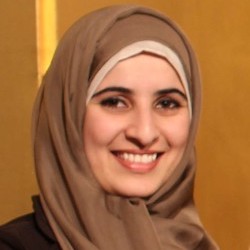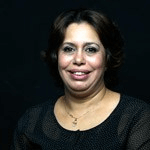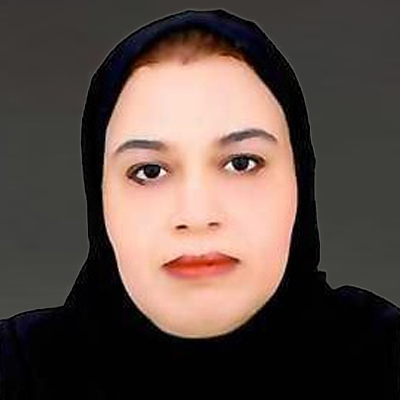
Duration
Four Years
Medium of instruction
English
Degree awarding body
SCD
Program Mission
The mission of the Fine Arts program is to prepare students to create, practice, and communicate their ideas and concepts in visual language through the provision of theoretical knowledge and studio-based education, enabling them to contribute effectively to their field.
Accreditation
Institutionally Accredited by OAAAQA & Overseen by the MOHERI in the Sultanate of Oman.
Substantial Equivalency of the Bachelor of Arts in Fine Arts from the National Association of Schools of Art and Design (NASAD).
Quality Assurance Certificate from the Accreditation and Quality Assurance Commission for Higher Education Institutions (AQACHEI - Jordan).
Program Description
Bachelor of Arts in Fine Arts is a four-year program introducing students to art history, contemporary trends, theories, and visual studies in a studio-based environment to explore traditional and modern media, styles, and techniques. In this program, students develop creative thinking skills and problem-solving strategies to become artists. The program covers four main areas - drawing, painting, ceramics, and sculpture. The program adopts a student-centered environment, allowing them to gain hands-on experience and an opportunity to express their artistic vision and build a professional career.
Program Objectives
- Provide adequate knowledge of art history, aesthetics, and contemporary practices.
- Create artwork using different tools, materials, and techniques.
- Consider cultural values in developing a personal artistic style.
- Prepare students to be skilled artists and be creative.
Program Learning Outcomes
- Practice general educational knowledge, such as research skills, business, and psychological principles, to apply them in their respective professions.
- Develop English proficiency level to communicate effectively using art and design terminology.
- Apply art and design elements and principles to create artwork.
- Recognize historical and contemporary concepts in varied art styles to express them effectively within the field.
- Demonstrate appropriate techniques, skills, and styles of art and design using different mediums to create artwork in an intended form.
- Value recent trends to practice advanced creative expression in professional artwork.
Career Opportunities
- Productive visual artists
- Sculptors and Ceramic artists
- Handicraft artists
- Museum and gallery Directors
- Art teachers
Year
Semester 1
ART510
Drawing I
3
DES511
Design Studio I A/B *
4
DES512
Technical Graphics I
3
DES513
Introduction to Design
3
ENG500
English for Art & Design I
3
LRT600
Learning Research Techniques
3
Semester 2
PHO510
Photography I
3
ART610
Drawing II **
3
DES611
Design Studio II A/B *
4
ENG600
English for Art & Design II
3
GRA510
Introduction to Computer Graphics
3
Year
Semester 1
ART611
Ceramics I
3
ART612
Painting I
3
ELE500
Elective
3
ENG800
English Academic Writing
3
ART719
Sketching
3
GRA610
Intermediate Computer Graphics
3
Semester 2
ART710
Ceramic II
3
ART613
Perspective Drawing
3
ART711
History of Art I
3
ART712
Painting II
3
CST510
History of Oman Civilization
3
ARA510
Arabic Creative Writing
3
Year
Semester 1
ELE700
Elective
3
ART810
Ceramic III
3
ART713
History of Art II
3
ART617
Sculpture I
3
Semester 2
ART717
Islamic Art
3
ART715
Sculpture II
3
ART811
Painting III
4
ART718
Digital Art
3
PSY500
Introduction to Psychology
3
Year
Semester 1
ART812
History of Modern Art
3
ART813
Painting IV
5
ART814
Sculpture III
4
ART716
Printmaking
3
ENG700
Fundamentals of Oral Communication
3
Semester 2
ART618
Art Education
3
ART816
Contemporary Art
3
ART817
Fine Arts Internship
1
ART818
Senior Study
5
ENT600
Entrepreneurship
3
Semester 1
ART510
Drawing I
3
DES511
Design Studio I A/B *
4
DES512
Technical Graphics I
3
DES513
Introduction to Design
3
ENG500
English for Art & Design I
3
LRT600
Learning Research Techniques
3
Semester 2
PHO510
Photography I
3
ART610
Drawing II **
3
DES611
Design Studio II A/B *
4
ENG600
English for Art & Design II
3
GRA510
Introduction to Computer Graphics
3
Semester 1
ART611
Ceramics I
3
ART612
Painting I
3
ELE500
Elective
3
ENG800
English Academic Writing
3
ART719
Sketching
3
GRA610
Intermediate Computer Graphics
3
Semester 2
ART710
Ceramic II
3
ART613
Perspective Drawing
3
ART711
History of Art I
3
ART712
Painting II
3
CST510
History of Oman Civilization
3
ARA510
Arabic Creative Writing
3
Semester 1
ELE700
Elective
3
ART810
Ceramic III
3
ART713
History of Art II
3
ART617
Sculpture I
3
Semester 2
ART717
Islamic Art
3
ART715
Sculpture II
3
ART811
Painting III
4
ART718
Digital Art
3
PSY500
Introduction to Psychology
3
Semester 1
ART812
History of Modern Art
3
ART813
Painting IV
5
ART814
Sculpture III
4
ART716
Printmaking
3
ENG700
Fundamentals of Oral Communication
3
Semester 2
ART618
Art Education
3
ART816
Contemporary Art
3
ART817
Fine Arts Internship
1
ART818
Senior Study
5
ENT600
Entrepreneurship
3
Course Details






Head of Fine Art

Welcome to a world where art, passion, and innovation come alive. We are truly pleased to have you join our community. Our dedicated faculty and inspiring environment are here to support you every step of the way. In the fields of fine arts, photography, and fashion design, you will have the opportunity to discover your unique voice, sharpen your skills, and push creative boundaries.
Dr.Rahma Al Rashdi,
Head of Fine Art
Scientific College of Design

1
Success in General Education Diploma or its Equivalent.2
The students should get a minimum grade of C- in Design Studio I, Design Studio II, and Drawing I3
The students should get a minimum grade of B- in Drawing IIBA - Fine Arts
Tuition Fees
| Duration | Credit Hours | Fees | Other Fees | Sub Total | |
|---|---|---|---|---|---|
| General Foundation Program | 3 Semesters | - | 2,575 OMR | - | 2,575 OMR |
| Design Foundation Program | 2 Semesters | 33 | 2,475 OMR | 250 OMR | 2,725 OMR |
| Bachelor Degree | 6 Semesters | 99 | 5,940 OMR | 750 OMR | 6,690 OMR |
| Grand Total | 11,990 OMR | ||||
* Fees / tuitions are subject to changed accoridng to the college financial polcies / procedures and upon MoHERI approval
Finance Details
Oman Arab Bank
3128231666500
Bank Muscat
0313029205120016
Sohar International Bank
043020017921
*All payment are accepted through bank deposit.













